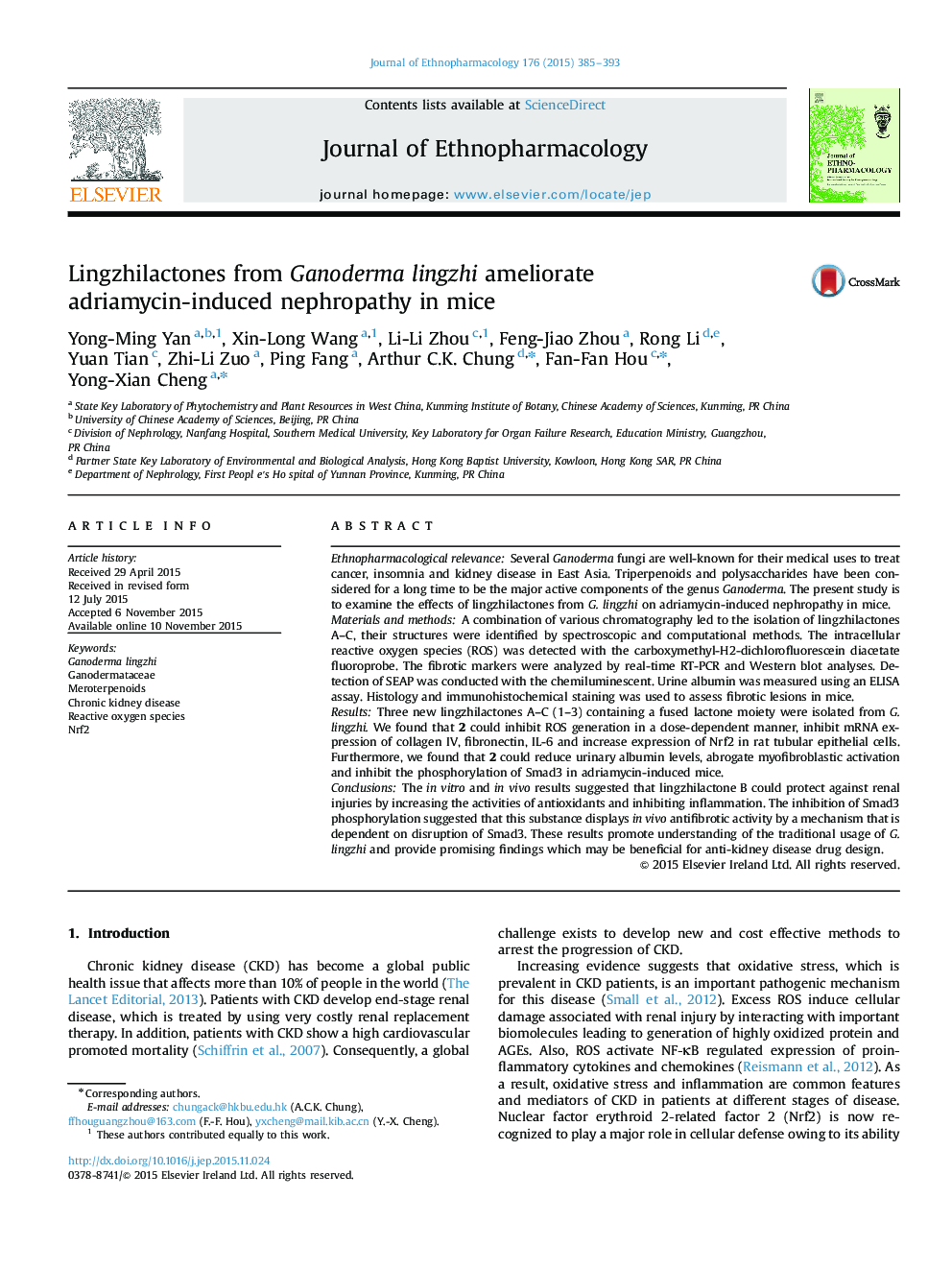| کد مقاله | کد نشریه | سال انتشار | مقاله انگلیسی | نسخه تمام متن |
|---|---|---|---|---|
| 5834978 | 1560386 | 2015 | 9 صفحه PDF | دانلود رایگان |

Ethnopharmacological relevanceSeveral Ganoderma fungi are well-known for their medical uses to treat cancer, insomnia and kidney disease in East Asia. Triperpenoids and polysaccharides have been considered for a long time to be the major active components of the genus Ganoderma. The present study is to examine the effects of lingzhilactones from G. lingzhi on adriamycin-induced nephropathy in mice.Materials and methodsA combination of various chromatography led to the isolation of lingzhilactones A-C, their structures were identified by spectroscopic and computational methods. The intracellular reactive oxygen species (ROS) was detected with the carboxymethyl-H2-dichlorofluorescein diacetate fluoroprobe. The fibrotic markers were analyzed by real-time RT-PCR and Western blot analyses. Detection of SEAP was conducted with the chemiluminescent. Urine albumin was measured using an ELISA assay. Histology and immunohistochemical staining was used to assess fibrotic lesions in mice.ResultsThree new lingzhilactones A-C (1-3) containing a fused lactone moiety were isolated from G. lingzhi. We found that 2 could inhibit ROS generation in a dose-dependent manner, inhibit mRNA expression of collagen IV, fibronectin, IL-6 and increase expression of Nrf2 in rat tubular epithelial cells. Furthermore, we found that 2 could reduce urinary albumin levels, abrogate myofibroblastic activation and inhibit the phosphorylation of Smad3 in adriamycin-induced mice.ConclusionsThe in vitro and in vivo results suggested that lingzhilactone B could protect against renal injuries by increasing the activities of antioxidants and inhibiting inflammation. The inhibition of Smad3 phosphorylation suggested that this substance displays in vivo antifibrotic activity by a mechanism that is dependent on disruption of Smad3. These results promote understanding of the traditional usage of G. lingzhi and provide promising findings which may be beneficial for anti-kidney disease drug design.
Graphical Abstract241
Journal: Journal of Ethnopharmacology - Volume 176, 24 December 2015, Pages 385-393